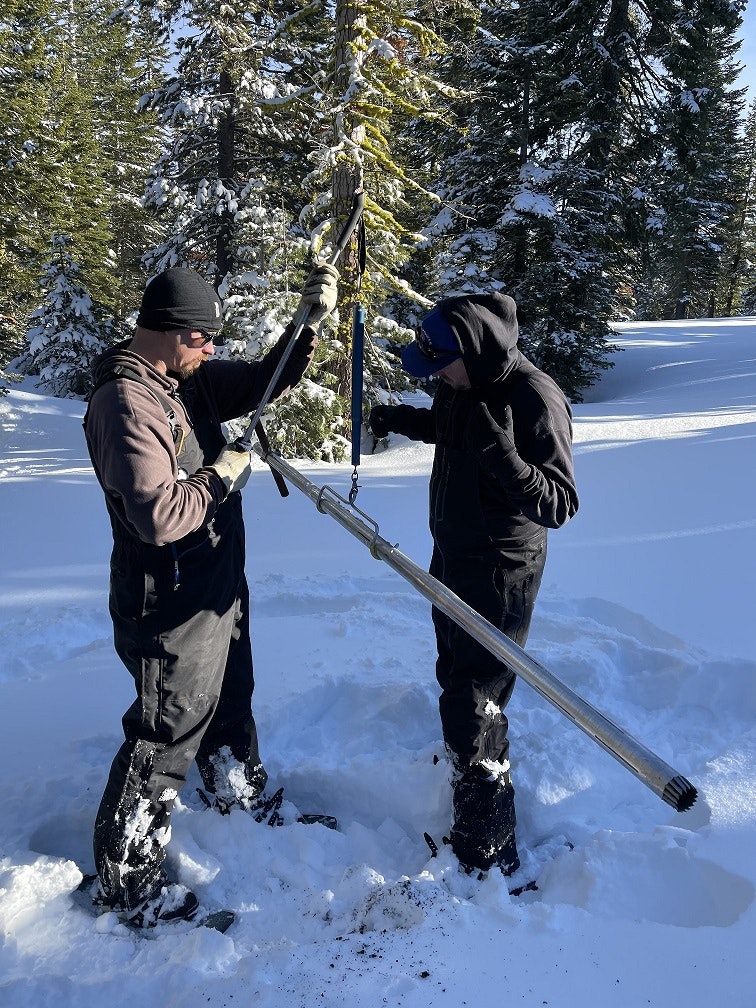Mountain snowpack and our water supply: why do we weigh the snow?
The Nevada Irrigation District depends on Sierra snowpack for its water supply. On one hand, it’s a simple process. During winter, snow amasses in the higher elevations. The warmer temperatures of spring and early summer melt the snow, and it creates water runoff that flows down to the foothills through the District’s infrastructure and to your tap.

On the other hand, what happens between the falling of snowflakes and the snowmelt runoff is complex. There are a number of things to consider, from precipitation patterns, moisture content of the snow, soil moisture, air temperatures and frequency of snowfall to how plants and the environment use the water.
Multiple snow surveys are taken each year to account for these factors as they change throughout the season. Water managers then use that data to forecast runoff and determine how much water will be available to the District.
Why weigh the snow?

When NID surveyors take snow samples, they measure the snow for depth, but also weigh the snow to determine how much water is in it.
By weighing a snow sample, surveyors are able to determine the inches of water content, which is known as the snow water equivalent (SWE). That’s basically the amount of water that would run off if the entire snowpack melted instantly.
Back in a heated office, water managers use the measurement to know how much water the snowpack will yield when it melts. That's what determines the water availability for the year.
During NID’s survey on January 26: the English Mountain snow course (7,100 ft.) had 49.5 inches of snow with a water content of 15.2 inches. Findley Peak (6,500 ft.) had a snowpack of 36 inches and a 9.5-inch water content. Bowman Reservoir (5,563 ft.) had 21.5 inches of snow and a 7.4-inch water content.

After another round of snowfall, on Feb. 4, NID surveyors took samples at the District’s highest course. On Webber Peak (7,800-foot elevation) they measured 65.8 inches of snow with a water content of 19 inches. Webber Lake (7,000 ft.) had 69 inches of snow with a water content of 17.6 inches.
The storms between January 26 and the surveys on February 4 added approximately 6 inches of water content to our snowpack. The water content from three site samples taken on January 26 was extrapolated to estimate a new tally after the February storm. In total, for NID’s five courses, the extrapolated average is approximately 17 inches of water content of the 20.3-inch average for this time of year.
By comparison, last year around this time the average water content was 14.7 inches, about 72 percent of average.
What can you do to help? Some may recommend a snow dance – including flushing ice cubes down the toilet, tucking a spoon under your pillow, and wearing your pajamas inside out. A more practical way is to conserve water. Every drop saved now will help make up for a diminished snowpack and later runoff that is our water supply.
